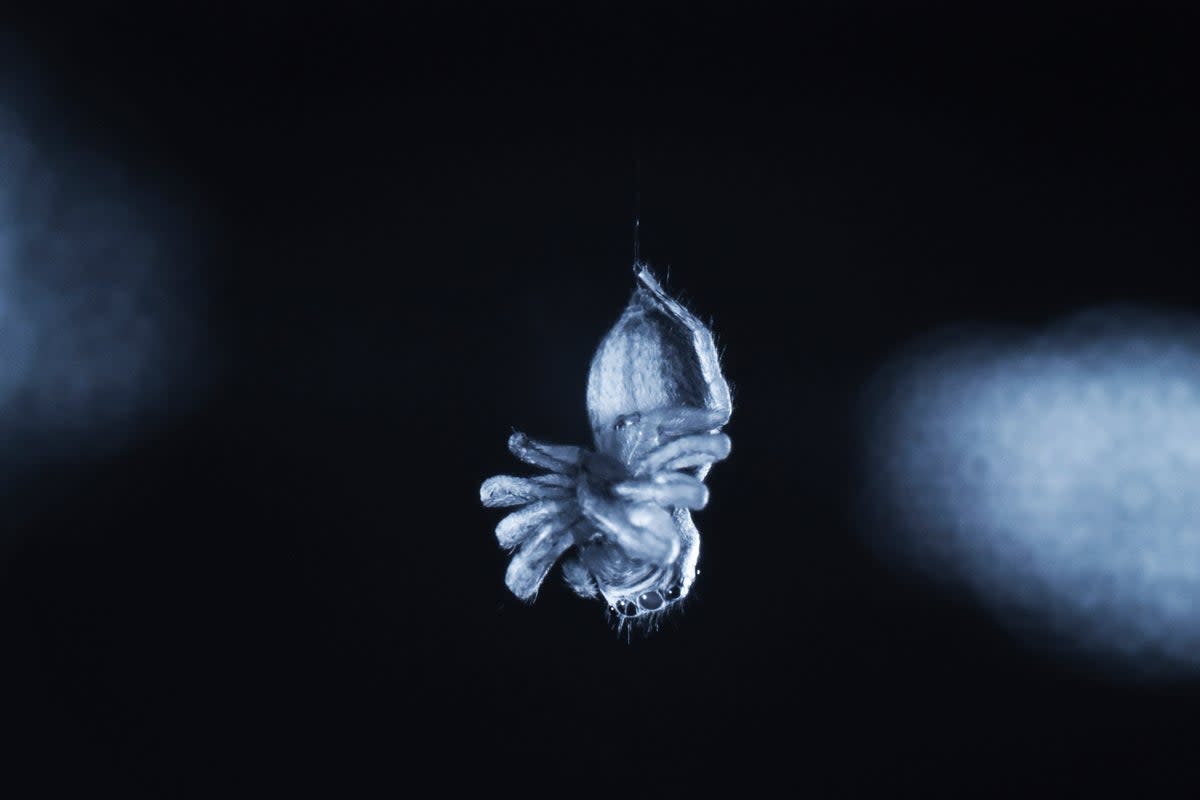Spiders could have dreams and sleep like humans, scientists say

Scientists have found evidence of patterns similar to a dream-like state in spiders, an advance that sheds more light on the origin, evolution and function of the sleep cycle.
The study, published on Monday in the journal PNAS, observed jumping spider babies using special cameras and found that spiders’ limbs twitched, the retinas in their eyes moved and their legs curled when they were resting at night.
Researchers, including those from the University of Konstanz in Germany described this pattern as a “REM sleep-like state”.
REM, or rapid eye movement, is a phase of sleep closely associated with dreaming, during which parts of the human brain have been found to show signs of activity.
While previous studies have shown evidence of sleep and sleep-like states across the animal kingdom, including in some insects, worms and even marine creatures like sharks, scientists said the existence of different phases of sleep across animal groups has remained unclear.
The study of REM sleep, in particular, is still “largely centered on” terrestrial vertebrates, especially mammals and birds.
Scientists said cross-species comparisons of REM sleep have been particularly difficult since movable eyes are present only in a limited number of animal lineages – notably absent in insects and other closely related groups.
Jumping spiders, however, offer a means to study this sleep phase as these creatures, about the size of a fingernail, possess movable retinal tubes to redirect gaze.
In newly emerged spiderlings of the species, researchers said, these movements can be more directly observed through their temporarily translucent exoskeleton.
In the new study, using cameras trained to observe jumping spiders at night, scientists observed periodic bouts of retinal movements along with limb twitching.
🕷️Do spiders dream of invertebrate sheep?
💤Jumping spiders may have a REM (rapid eye moment) sleep-like state, similar to the active sleep of dreaming humanshttps://t.co/vqJzYx0Xnm pic.twitter.com/qWzs4BR4Ud— Au Science Media Ctr (@AusSMC) August 9, 2022
Researchers also report “stereotyped leg curling behaviors” in a jumping spider that included broad contractions of limbs toward the sternum.
They said the observations offer parallels to REM sleep in terrestrial vertebrate animals like humans and other mammals.
“Observed retinal movement bouts were consistent, including regular durations and intervals, with both increasing over the course of the night,” scientists wrote in the study.
“Given the regularity of twitches and leg curls and their co-occurrence with retinal movements, both movement types appeared to be different expressions of the same active sleep–like phase,” researchers explained.
They said the findings challenge conventional wisdom on REM sleep.
“Observed retinal movement bouts were consistent, including regular durations and intervals, with both increasing over the course of the night,” scientists noted.
“Eye movement patterns during REM sleep have been hypothesised to be directly linked to the visual scene experienced while dreaming – begging the deeper question of whether jumping spiders may be experiencing visual dreams,” researchers concluded.
While sleep is a common trait seen across creatures in the animal kingdom, it remains to be found if REM-like sleep is equally universal.
It is also unclear how these sleep phases are expressed in less visual species, scientists pointed out.


